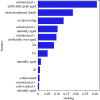Unsupervised machine learning discovers classes in aluminium alloys
- PMID: 36756073
- PMCID: PMC9890099
- DOI: 10.1098/rsos.220360
Unsupervised machine learning discovers classes in aluminium alloys
Abstract
Aluminium (Al) alloys are critical to many applications. Although Al alloys have been commercially widespread for over a century, their development has predominantly taken a trial-and-error approach. Furthermore, many discrete studies regarding Al alloys, often application specific, have precluded a broader consolidation of Al alloy classification. Iterative label spreading (ILS), an unsupervised machine learning approach, was used to identify the different classes of Al alloys, drawing from a specifically curated dataset of 1154 Al alloys (including alloy composition and processing conditions). Using ILS, eight classes of Al alloys were identified based on a comprehensive feature set under two descriptors. Further, a decision tree classifier was used to validate the separation of classes.
Keywords: alloy design; aluminium; aluminium alloys; machine learning; mechanical properties; unsupervised learning.
© 2023 The Authors.
Conflict of interest statement
The authors declare that they have no known competing financial interests or personal relationships that could have appeared to influence the work reported in this paper.
Figures












References
-
- Dixon MF, Halperin I, Bilokon P. 2020. Machine learning in finance. Berlin, Germany: Springer.
-
- Cramer S, Kampouridis M, Freitas AA, Alexandridis AK. 2017. An extensive evaluation of seven machine learning methods for rainfall prediction in weather derivatives. Expert Syst. Appl. 85, 169-181. (10.1016/j.eswa.2017.05.029) - DOI
LinkOut - more resources
Full Text Sources

